How to Draw Hair in Digital Art: Tips and Techniques
In digital art, hair is not just a crucial element of character design but also a key detail that showcases a character's personality and style.
Each strand of hair is like sculpting the soul of the character. However, many enthusiasts often rely on intuition when drawing hair, leading to results that may lack naturalness and liveliness.
If you're facing this challenge, explore some simple and practical hair-drawing techniques with us to add depth and charm to your characters!
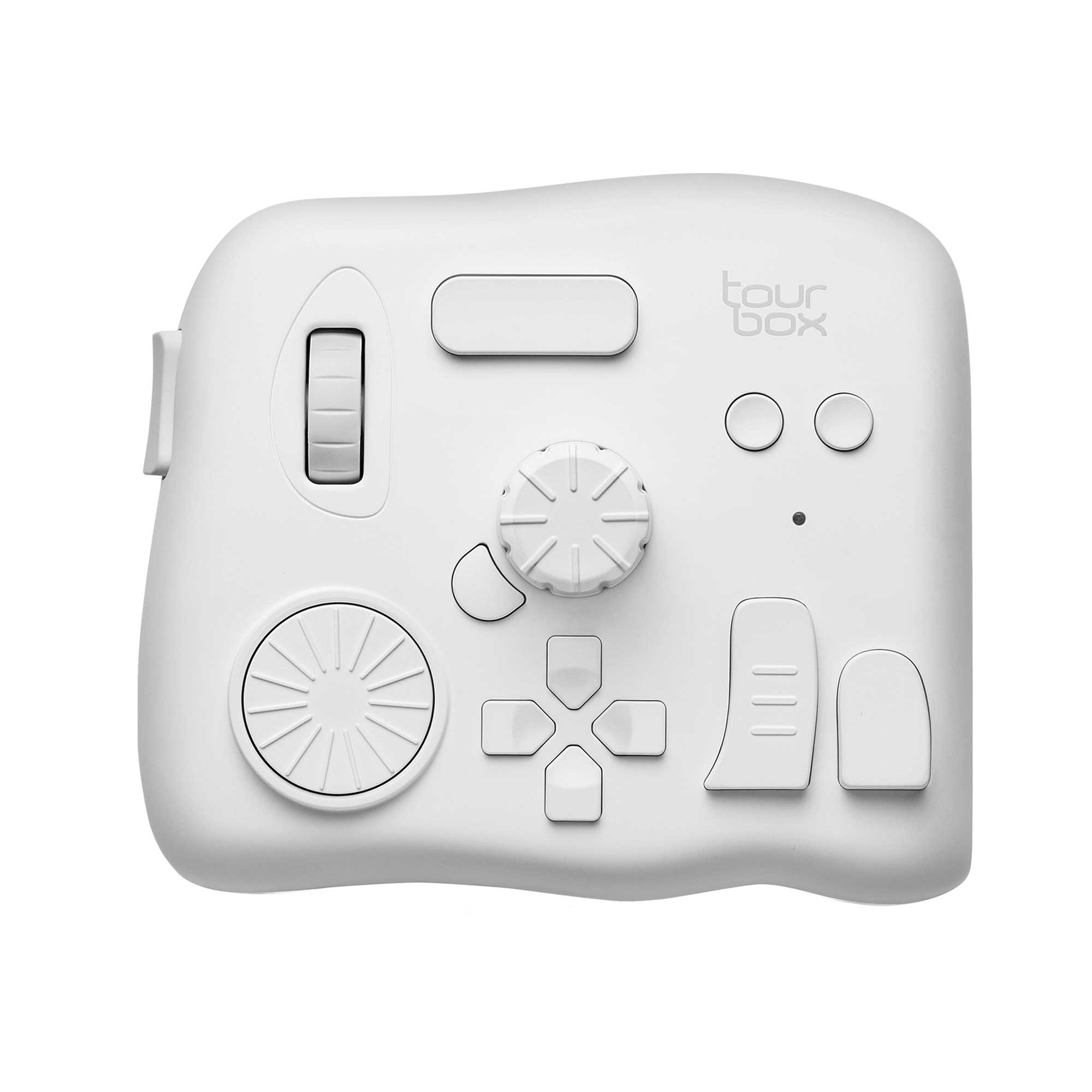
In this article, you will learn:
- Outline the Head Shape and Determine the Hairline
- Simplify Hair Structure with Grouping
- Understand the Flow and Dynamics of Hair
- Straight or Curly?
- Create Layered Line Art
- Tips for Coloring Hair
- Worthwhile Hair Drawing Tips to Try Out
Outline the Head Shape and Determine the Hairline
The first step in drawing hair is accurately outlining the head shape because the growth and flow of hair always depend on the structure of the head.
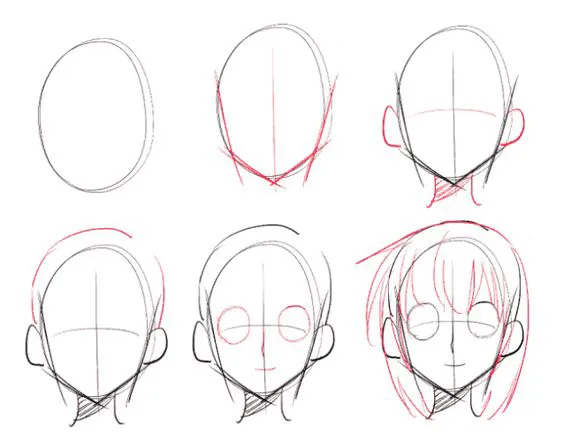
- Define the head shape: When drawing the curves of the head, remember that hair doesn't stick tightly to the scalp. Leave some thickness to show the natural volume of the hair.
- Locate the hairline: Following facial proportions, the hairline generally falls around the midpoint between the top of the head and the eyes. Marking the hairline with guidelines can help you maintain accuracy in proportions and structure.
- Overall layout: The curves of the head can guide the flow of the hair, ensuring that the hair complements the shape of the character's head.
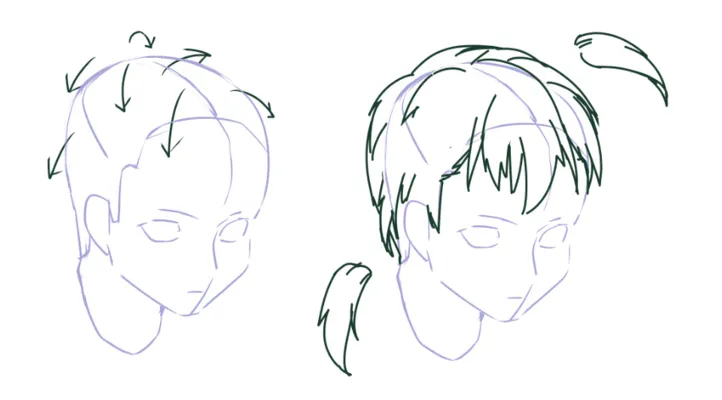
Simplify Hair Structure with Grouping
Hair flow can be incredibly complex, but breaking it into manageable sections makes it much easier to handle and understand.
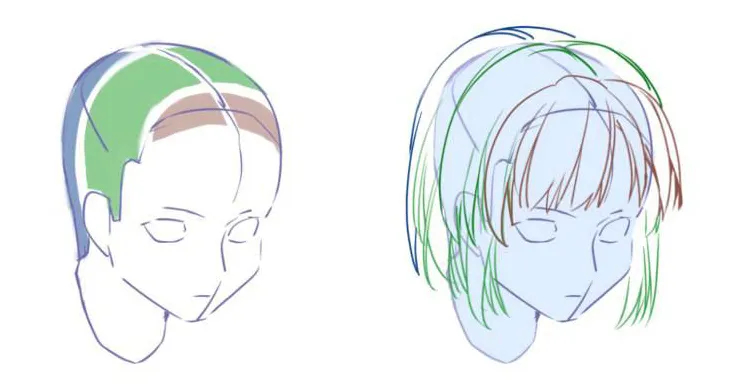
- Divide into Three Key Areas: Start by splitting the hair into three main sections: bangs (or fringe), side hair, and back hair. Work on each section individually to define its shape and flow.
- Think in Hair Strands, Not Individual Hairs: Instead of trying to draw every single strand, group the hair into clusters or strands. This creates a layered, more natural look and helps avoid a messy or overly busy appearance.
- Follow the Growth Points: Hair typically grows from three main areas: the crown (hair whorl), parting line, and hairline. Begin drawing from the crown, following the natural flow of the hair as it falls towards the shoulders and neck. This approach ensures the hair looks realistic and consistent with its growth pattern.
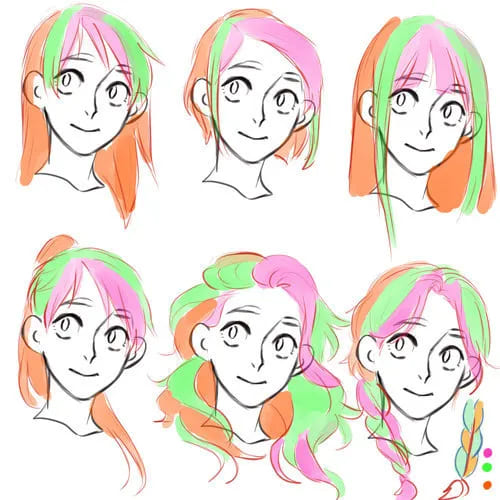
Understand the Flow and Dynamics of Hair
The key to making hair look natural is mastering the direction and logic of hair strands.
Three key elements of hair flow:
- Gravity: When hair naturally falls, it follows a gentle curve due to the influence of gravity.
- Attachments: The flow of hair typically adheres to the shape of the head, shoulders, neck, or other objects (like hats or earrings). These external factors need to be considered.
- External Forces: Wind or character movements can create dynamic changes in hair. Incorporating these effects appropriately during the drawing process adds vitality to the strands.
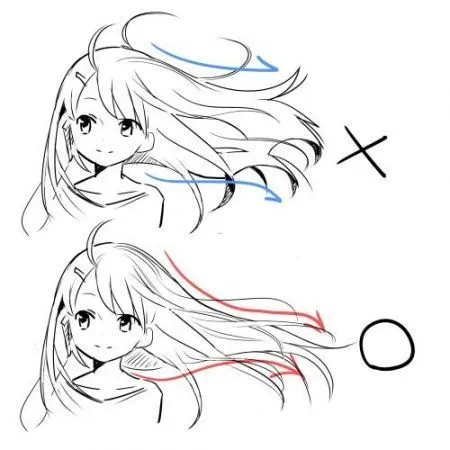
The complexity of hair can make it easy to lose the overall sense. To avoid chaotic drawing, start by sketching rough lines to establish the main direction of the hair strands and then refine each strand based on this foundation.
Focus on the overall shape and volume of the hair rather than getting caught up in the details of individual strands.
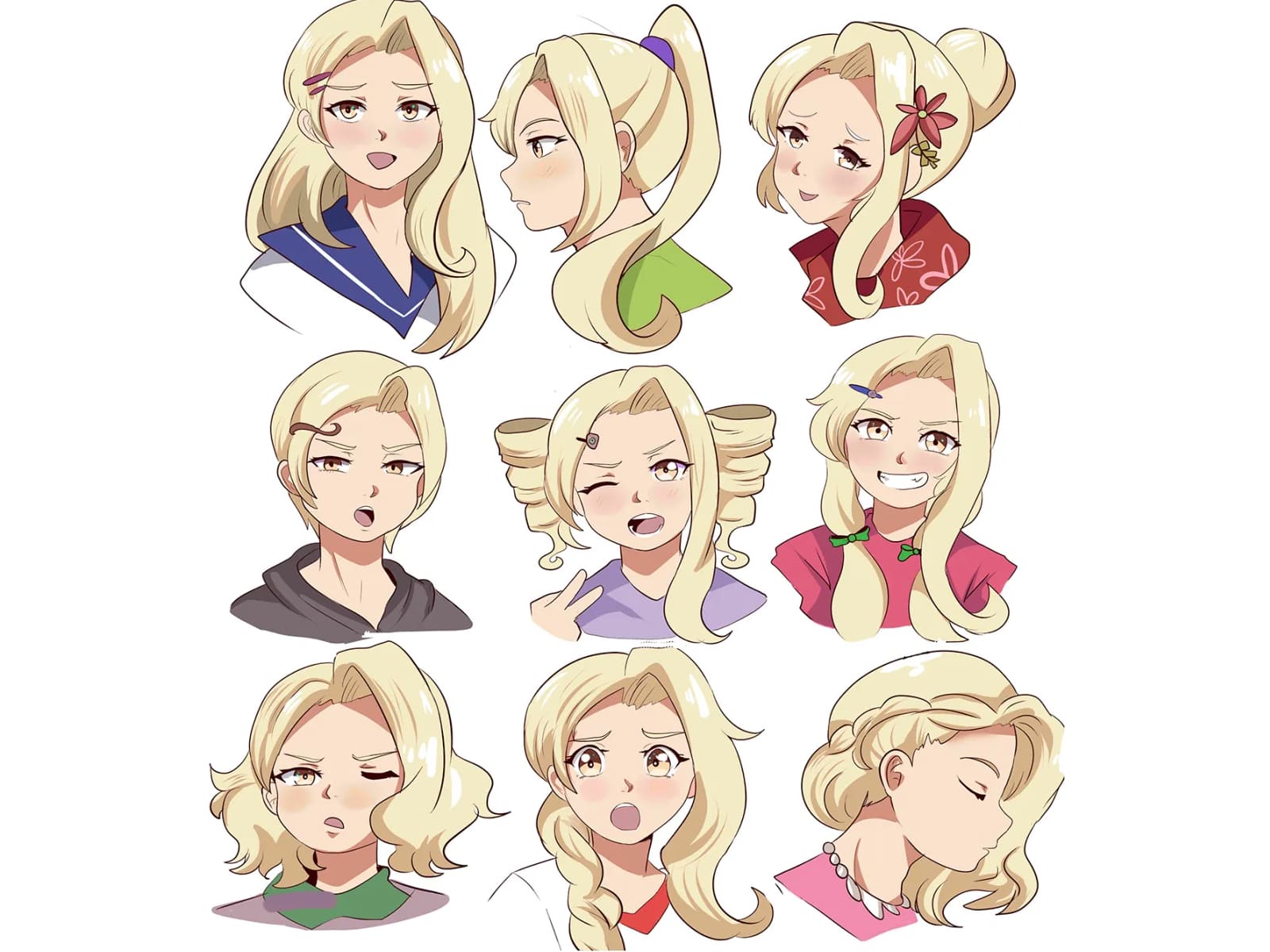
Straight or Curly?
Hair can generally be categorized into straight and curly, and combining these two textures allows for endless hairstyle variations.
- Straight Hair: Straight hair requires smooth, flowing lines drawn in a single stroke. It's perfect for beginners to practice because of its simplicity and consistency.
- Curly Hair: Curly hair is more intricate. Imagine the strands wrapping around a cylinder or spiral when drawing. Pay attention to the repetitive curves and volume.
To achieve a natural look, focus on the flow and taper of the lines. Use your arm, rather than just your wrist, to draw longer, continuous strokes.
This ensures fluidity and avoids shaky or uneven lines. For areas where hair overlaps—like around the ears or in denser clusters—apply more pressure to create darker, more concentrated strokes, enhancing depth.
When creating art with digital art software, if you find yourself getting distracted by constantly adjusting brush settings, rotating the canvas, or tweaking layers, and it's hindering your immersive creative flow, you might appreciate TourBox.
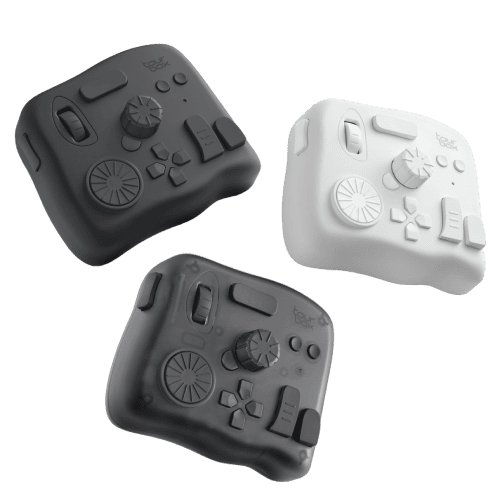
Similar to using a game controller to play video games, TourBox offers a similar tactile experience. Check out our digital painting page to discover more about how TourBox can enhance your creative process.
Create Layered Line Art
Line art forms the foundation for depicting hairstyles with depth. To achieve hair with dimension, it's essential to pay attention to the strength of lines and details.
- Smooth and Distinct Lines: Avoid short, intermittent lines to showcase the flow of strands. Instead, use long, fluid lines and gradually taper them towards the tips to create a natural hair effect.
- Depicting Layers with Lines: Emphasize the layering and direction of hair by using lines of varying thickness or overlapping lines. For instance, use thicker lines for the top of the head or dense areas, and thinner lines for the tips or sparse areas.
- Utilize the Eraser Tool: When refining details at the tips, gently use the eraser to simulate a natural trim at the ends of the hair, resulting in cleaner and crisper lines.
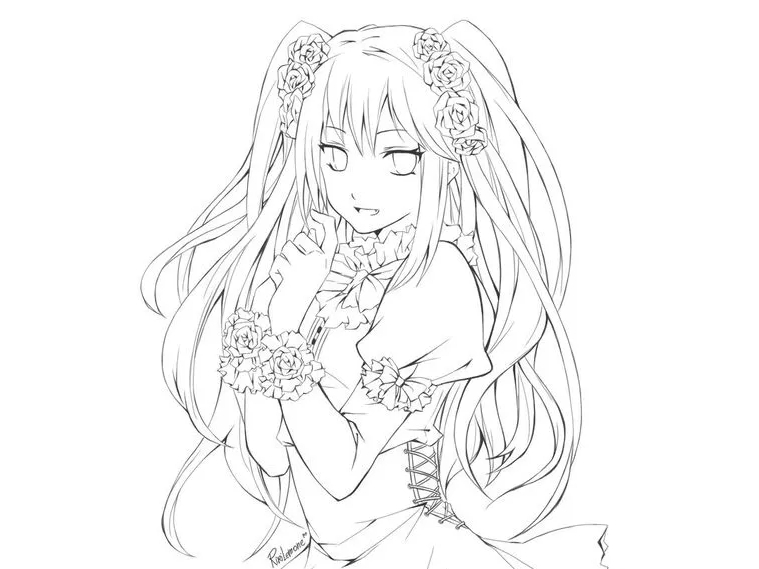
Tips for Coloring Hair
Adding color to hair is a crucial step that brings your artwork to life. The key is to follow the natural flow of the hair strands and pay attention to detail.
- Soften the Edges: To create a seamless transition between the hair and skin, use the Eyedropper Tool to pick up the skin tone. Then, lightly spray a thin layer of color along the hairline with the Airbrush Tool, mimicking the soft glow of natural lighting.
- Enhance with Accent Colors: Hair in a single flat color can look dull. To add depth and richness, use the Multiply Layer Mode to overlay subtle accent colors. For instance, adding red or gold tones to brown hair can make it appear more dynamic and realistic.
- Use Color Perspective: Warm colors like pink and orange appear closer, while cool tones like blue recede. Use this for chibi or anime hair: warm shades like pink or orange near the forehead, purples or greens in the middle, and blues toward the back for depth.
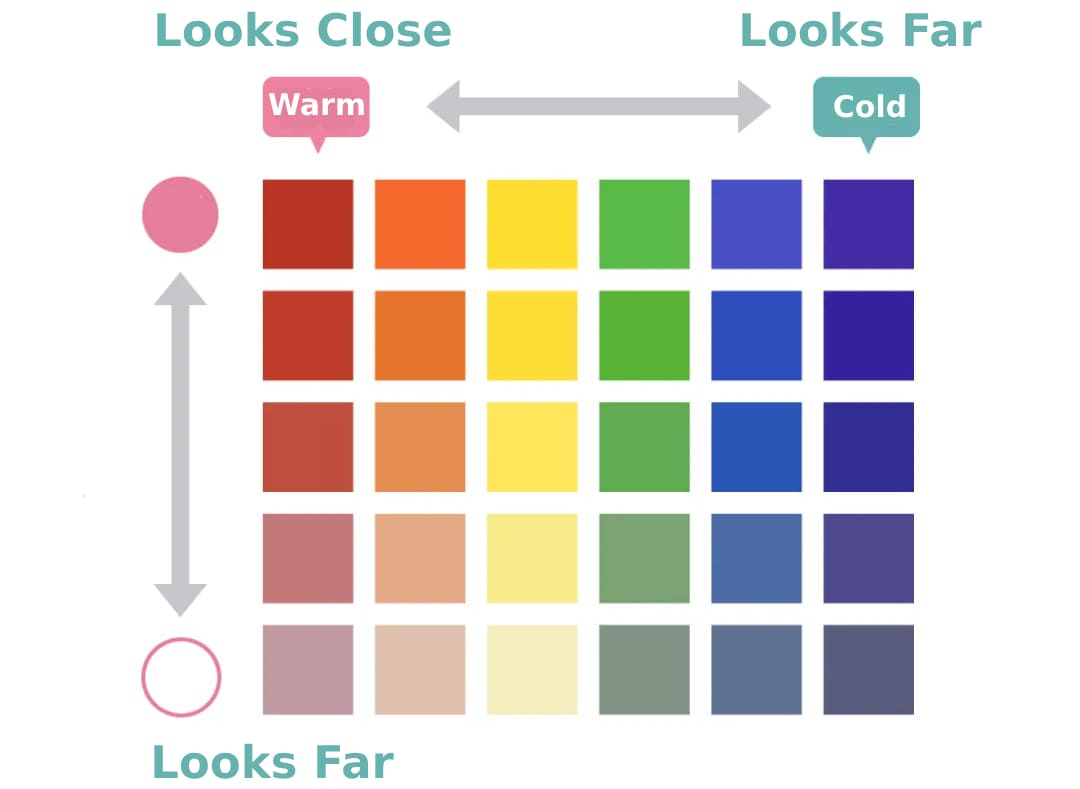
Worthwhile Hair Drawing Tips to Try Out
In addition to the hair drawing methods we've discussed, here are some extra tips worth trying out:
- Understand Hair Light and Shadow: The highlights, shadows, and transitions in hair are crucial for creating volume and transparency. Ensure smooth transitions, especially in areas with strong lighting where you can enhance the brightness of the highlights.
- Enhancing Hair Density: When detailing, enrich hair strands by adding texture. Create a layer in "overlay" blending mode, paste suitable textures, and adjust opacity for a natural look.
- Adding Highlights: Introduce subtle highlights in darker areas of the hair, especially near light sources, to add vibrancy and depth.
- Don't Forget Stray Strands: After the overall drawing is complete, lightly sketch some stray strands, especially around edges or bangs, for a more natural look.
- Using Softening Tools: Apply softening or blurring tools along hair edges to simulate the softness of real strands. Be cautious not to blur excessively and maintain the overall hair shape.
- Enhancing Color Depth: A single color can appear flat, so try using "burn" or "dodge" tools to subtly add color variations. For instance, add cool tones to highlights and warm tones to shadows for more texture.
- Layered Coloring: Separate hair sections into individual layers for highlights, shadows, and reflections. This makes adjustments easier and keeps the artwork tidy.
- Experiment with Custom Brushes: Choose or create brushes that suit hair textures to enhance efficiency and make strands appear more realistic and smooth.
Product Recommendation:
If you are a digital artist, content creator, or designer who enjoys drawing, editing, or designing on an iPad, we highly recommend experiencing our latest product, TourBox Elite Plus.
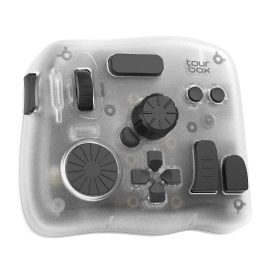
TourBox Elite Plus not only introduces support for the iPad for the first time but is also fully compatible with Mac and Windows platforms. With this TourBox Elite Plus, you can seamlessly switch between your computer and iPad at any time.
Moreover, you will surely appreciate its matte crystal-like touch. The sense of overall control it provides is fantastic. Give it a try and see for yourself!